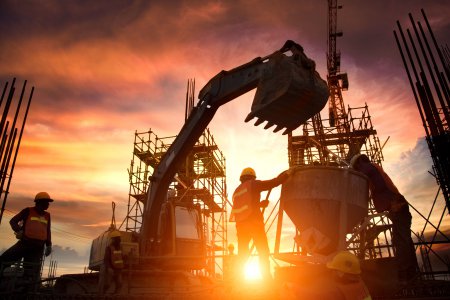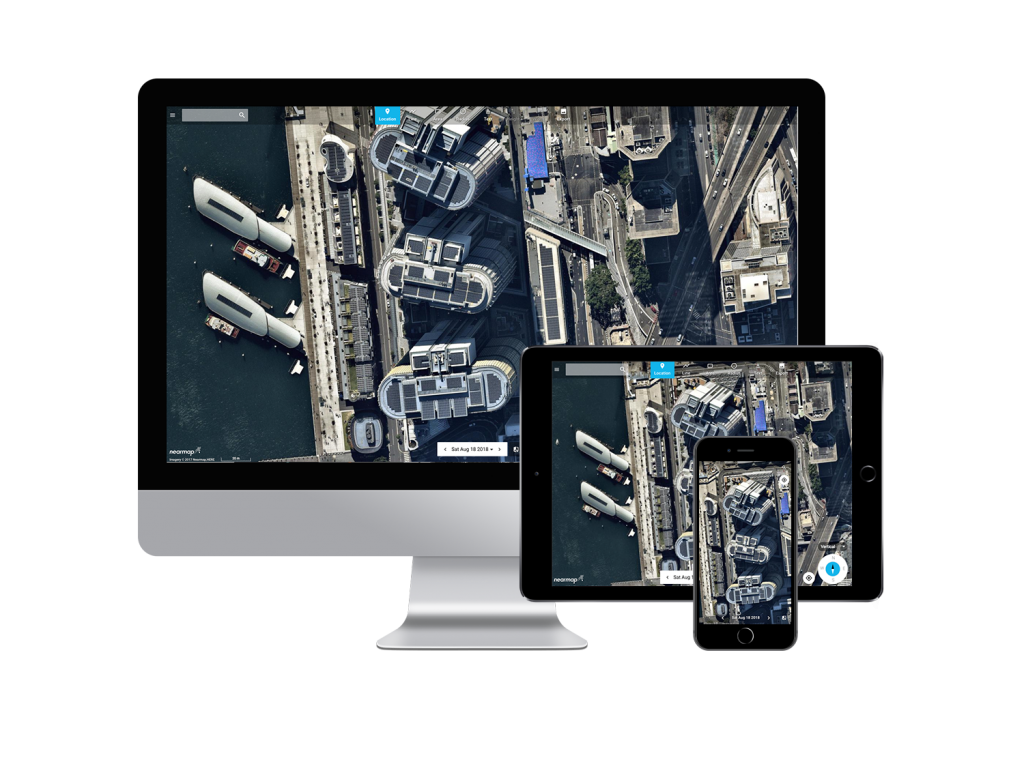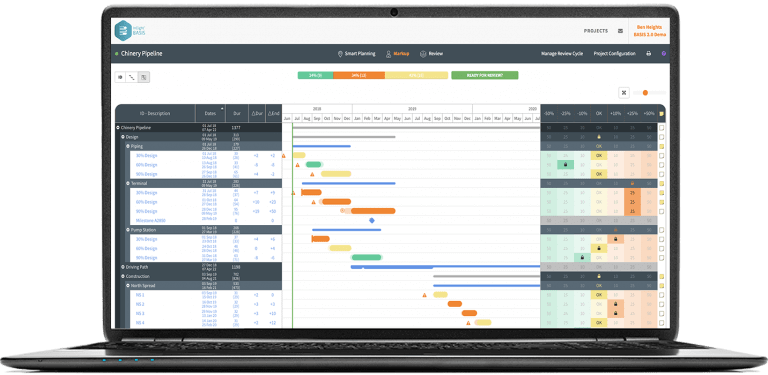Construction Tech: A Focus On Users And Processes. Under the mantra of ‘digital transformation’, construction professionals running companies hope that the correct application of the latest technology will make the difference, every time, between projects that finish expensively late, and those completing on-time and under budget.

Clearly, there’s no magic IT wand waiting to be waved to cure project headaches, and the danger is, of course, that expensive solutions will do little to address underlying causes of problems. The threat isn’t particular to building and construction: in any vertical, there’s no point in deploying technology to try to change business practices. When that happens, the expensive investment is regarded with suspicion by those asked to use it, and take-up of the solution will be reduced. Without total buy-in from staff using technology, digital transformation initiatives fall on stony ground.
As a single example, an industry survey found that when equipped with on-site mobile technology (as practiced by about a quarter of those surveyed), only 18 percent of those users switched on the device and used it to look at project data. To put that in context, 4.5 percent of site workers access project data during their working day from their (presumably costly) ruggedized, mobile devices.
Yet reading the marketing materials from industry software and hardware suppliers, one would be convinced that mobile solutions are industry-changing.
So, what’s changed since the 2016 report from McKinsey that showed 20 percent of major construction projects finish late and up to 80 percent, over budget?
While technology’s more esoteric offerings might find traction in other industries, the building and construction industry has requirements that while seemingly basic, are very complex to solve.
We ’re looking at three companies that have products that are born of long experience in the sector. None claim to be the magic bullet, but each address specific areas of building and construction management that produce quantifiable improvements as their end results.

Part of the issue with large projects running over budget is, naturally, the number of elements comprising the players in the arena. From conception, through planning, execution, and daily management, thousands of contractors, companies, individuals, and organizations are involved. Therefore, one of the more interesting technological breakthroughs for construction reflects that diaspora. In IT terms, that’s the API – to the layman, it’s the technology that can join up different technologies.
Here are some practical examples, too, of the types of issues building management systems might need to be conversant with:
- Placing the emphasis in terms of technology infrastructure not on the desktop workstation, but in centers of information that are easily and readily available. To many, that means the cloud, in other settings, edge solutions are more fitting – the actual location is irrelevant; it’s the openness and availability of data that’s important.
- Using technology already in place. Locking important data into a preset back-end solution type might mean that legacy systems must be scrap-heaped. Not only does that mean investment in new platforms but it could create poor levels of uptake in a solution. Here the term ‘legacy’, with its negative connotations, is probably not helpful. “Tried, tested and working” systems might be more accurate in many instances, rather than the disdainful “legacy” systems.
- Deploying user interfaces that are either already familiar or are swiftly assimilated. Thanks in part to the consumerization of technology, there exist many interface standards that are instantly recognizable: the clockwork cog for settings, parallel horizontal lines representing a menu, and so on. Any part of a GUI that places an overhead on its use is an obstacle over which people will stumble. Make users stumble too many times, especially in challenging environments like on a construction site, and soon, users will put technology to one side to get the job done. At that moment, the platform fails.
Here are three suppliers of the type of technology that will proactively assist companies involved in construction and building. Each aims to change and improve aspects of the processes (conception to final sign-off) that can make or break even the most modest project.
NEARMAP
The Australian technology unicorn Nearmap has developed a reputation in the last few years as a company whose products, after simple demonstration, effectively sell themselves. Its subscription-based orthogonal and oblique imagery have become a part of thousands of US and Australian construction companies’ toolboxes, offering regularly updated, high resolution aerial imagery as a service. The company’s latest addition, Nearmap 3D, adds a new dimension to its imagery-as-a-service menu, and will take the industry by storm.

In its latest iteration, the global Nearmap 3D library is available to stream online: streamable in the sense of not needing to have data installed locally. Instead, 3D is viewed in a lightweight web application, allowing subscribers to make length, height, and pitch measurements. In an industry-disrupting innovation, Nearmap users can also export 3D data by selecting an area of interest and exporting it as textured mesh, point cloud, digital surface models (elevation data), or true ortho. Depending on the size of the export, data is available for download in just a few minutes or hours — so construction project managers, building designers, and engineers can plug Nearmap 3D into GIS or CAD workflows seamlessly.
The huge global footprint available as online 3D textured mesh views is unique to Nearmap (the company manages its own data capture program over cities and regional areas) and is designed for accuracy and ease of use. The result? Massive savings in project planning, resources saved by conducting site visits virtually, and strategic insight for urban planners and building companies worldwide.
INEIGHT
Producing accurate forecasts for projects is a near-impossible task – or at least, it always has been a tremendous amount of work, requiring collaboration, the balancing of experience and projections, and continuous refinement of plans and forecasts as building progresses.

With the InEight platform, there are several easy wins for the planners: firstly, a place where every stakeholder can examine plans in progress or proposed, and comment and suggest amendments according to specific experience. While that style of human democratization feeds into the project in an entirely positive manner, the other aspect of InEight’s solutions is highly inventive and potentially ground-breaking. Using advanced AI (artificial intelligence) in a highly controlled and directed manner, the software examines every project, every similar situation, and every previous projection (versus reality) that’s been made to date. The algorithms then suggest alterations to the project’s costs, scope and timescales: the sum of knowledge summed up by InEight is HI + AI: human intelligence plus artificial intelligence.
HEXAGON PPM
Offering a range of platforms that covers off just about every aspect of business processes in use by construction and building companies, Hexagon is the evolution of one of the world’s oldest software companies, Intergraph. In use by enterprise-scale companies, large construction projects at scale are today usually adopting one or more Hexagon products, whether that’s for new infrastructure in utilities, or city-wide redevelopments and urban refreshes.
Most construction projects use a rattling toolkit of software, Excel sheets, whiteboards, and even A1 flip charts to plan and manage projects. By integrating business processes, Hexagon hopes to remove these silos of information and create a standardized platform right across the enterprise: planning to final invoicing.
With granular control over access and privileges, the company’s software and systems involve every stakeholder, creating a systemic, collaborative approach that is proven effective in many areas of construction and building at any scale.
Source: techwireasia











Hello, recognition you in regard to word! hims viagra http://viapwronline.com I repost in Facebook.
canadian viagra
small order cialis buy levitra mexico cialis coupon walmart